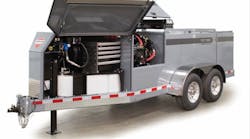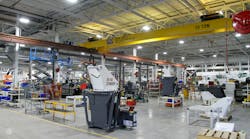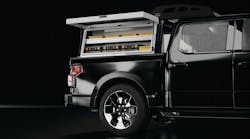CAST your eyes to the Land Down Under.
Australia surpassed Mexico in 2010 as our top trading partner in trucks, buses, bodies, and other truck equipment, according to the Department of Commerce's Foreign Trade Division. The United States' export total was $895.8 million to Australia, ahead of not only Mexico ($647.2 million), but the BRIC countries: China ($269.2 million), Russia ($197.1 million), Brazil ($183.5), and India.
“Australia rose from $444 million to $895 million in one year,” Latin-Kasper said in Truck Equipment Market Outlook: Domestic and International. “And that's probably going to keep growing, because Australia is sitting on a whole lot of natural gas, and more and more of that will get sucked out of the ground to replace oil, especially for home heating, all over the world.”
Latin-Kasper challenged companies to not only target Australia, but all countries outside our borders.
“The dollar is expected to remain weak the rest of this year, historically speaking, and US product, because of comparative pricing, is going to look good to the rest of the world at least through 2012,” he said. “The US dollar is not going to come bouncing back against other currencies until we clean up a big chunk of the deficit problem, so exporting will be a great way to diversify your customers and give you a hedge against the next recession as you develop a broader customer base.
“$17.5 billion worth of US trucks and truck equipment is being sold outside of the US. So the question becomes: Do you want a piece of $17.5 billion or don't you?”
He said that although the market size for the entire industry rose from $62.2 billion in 2009 to $78.8 billion in 2010, it has a long way to go to make up for the 50% decline from $125 billion in 2006.
Chassis shipments were up 23.1% and truck equipment shipments were up 8.8% in 2010, according to the NTEA and the Department of Commerce, and Latin-Kasper said similar growth is expected this year.
For medium-duty trucks, the 12-month moving average published by the Federal Reserve Bank of the US grew by just 2%, representing a 42% year-to-year change.
The picture was much different in heavy duty, where the 12-month moving average increased 21%, representing a 72% year-to-year change.
Trailer production compared to ATA freight shipments experienced a year-to-year bump of 80% in 2010 after four years of decline. But he said it will be impossible to sustain that.
“When you get to a bottom that low, achieving a growth rate that high isn't that hard to make happen,” he said. “ATA freight shipments started increasing toward the beginning of 2010 and by the end of 2010 reached a level of 5%, which is about as good as freight-shipment increases get. That's something to be really happy about, but it tailed off. It'll be hard to keep that rate of growth. It will fall substantially in 2011, but it has to. It will still be two very good years.”
Inventory issues
The OEM/Body Manufacturers Monthly Statistics Program paints a picture of growth because it measures box-off data, which he says is more accurate for what industry companies deal with on a day-to-day basis. Strip chassis were up 30.9% in 2010, followed by cutaway (24.8%) and conventional (3.4%). The biggest growth rate came in Class 5 (56.8%) and Class 2 (46.1%).
“That resulted in some inventory problems that are not so obvious yet, but we are starting to get anecdotal feedback,” he said. “Generally speaking, there are not any big gaps between retail sales and factory shipments in Class 7 and 8. There was a little gap that opened up on the heavy-duty side of the market, and that closed rapidly at the end of the year with retail sales moving up past production numbers. So now we're looking for another increase in production like we saw in the first quarter to close what's looking like another gap, except this time on the downside for production. They have to make that up.
“It's not big industry-wide in Class 2 and 5. We're seeing lead times get out there a bit. You may be able to convince people at the OEMs to pick up production where necessary, put a little bit of pressure on them, because we'd like to not see a 2006 repeat, where lead times pushed out. Communication is critical. If you know you're going to need some chassis, you don't want to wait until the last minute to tell them about it. One of the best pieces of advice I can give you is to talk to people you're getting chassis from.”
Latin-Kasper said that state and local government spending on equipment should increase in 2011.
“Practically everybody in the industry wants to deal with municipal and state governments in truck sales and equipment sales,” he said. “When state and local government expenditures actually decline and go negative, they don't stay down there long. Tax revenues are increasing in most states compared to previous quarters. They aren't going to get above the zero line until the end of 2011. We expect to start seeing municipal and state governments increasing expenditures by 2012.”









